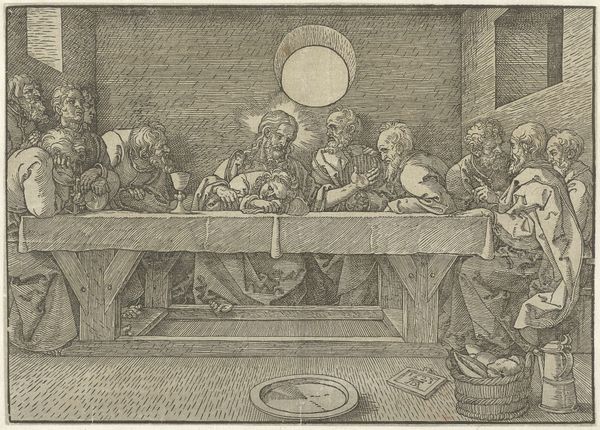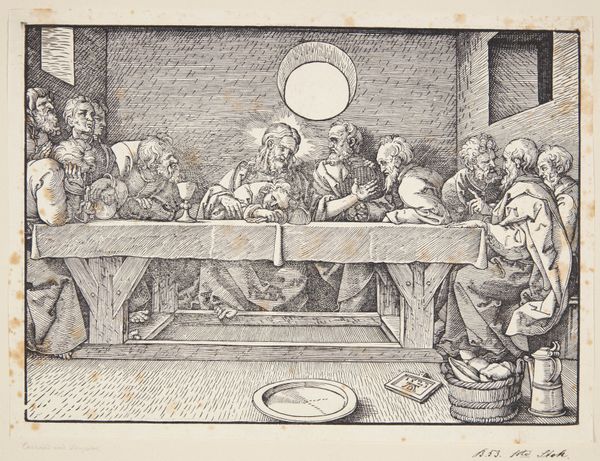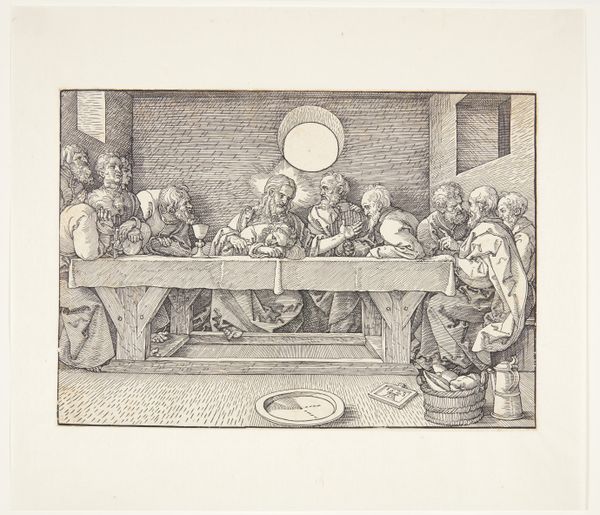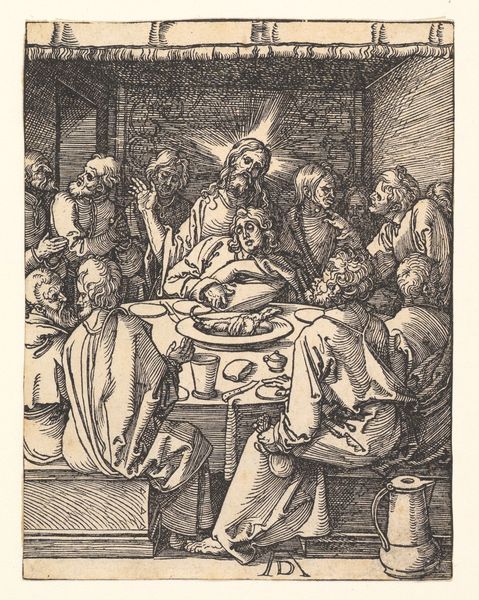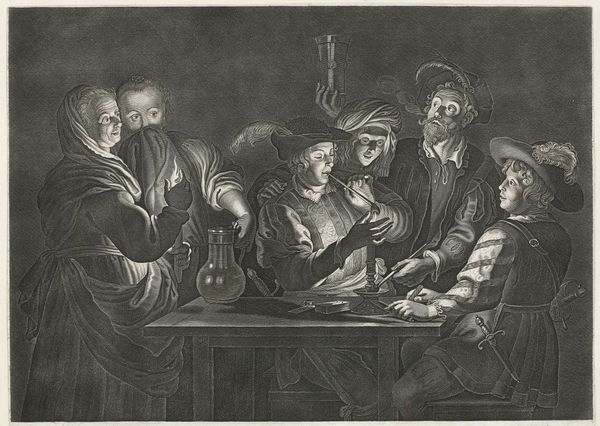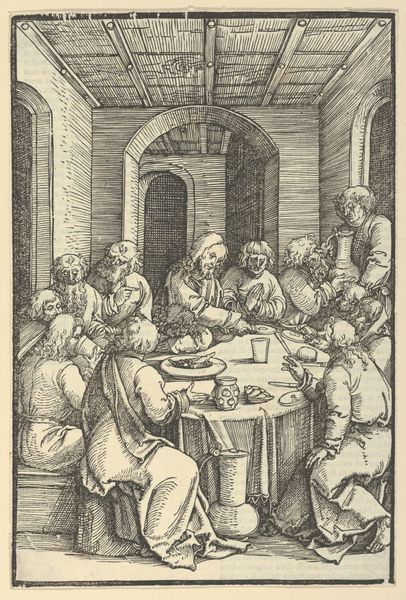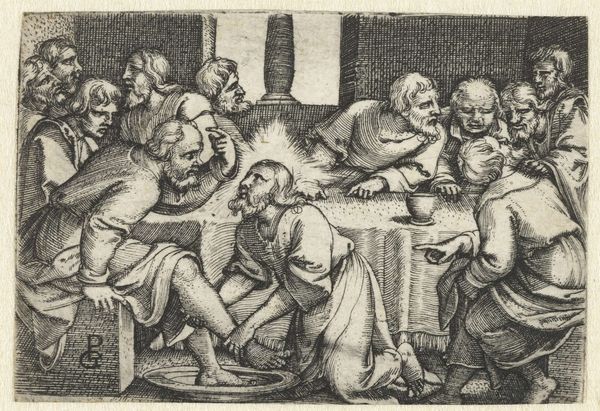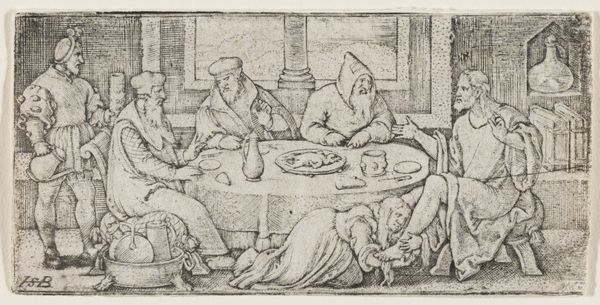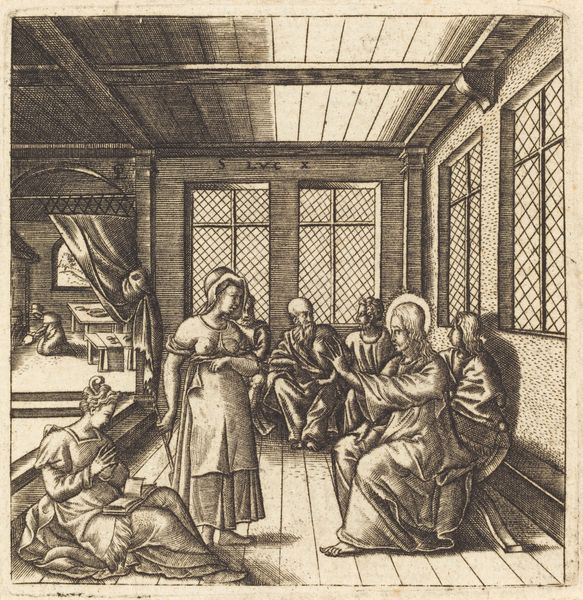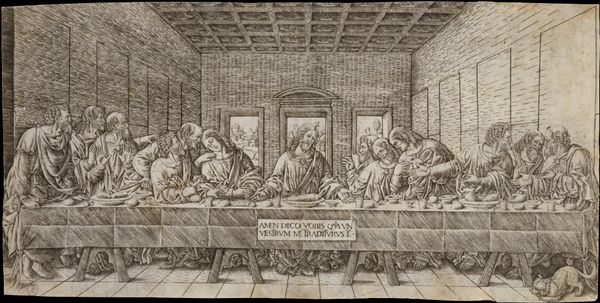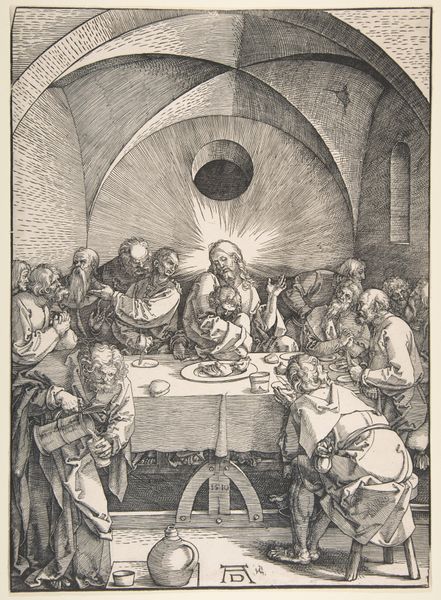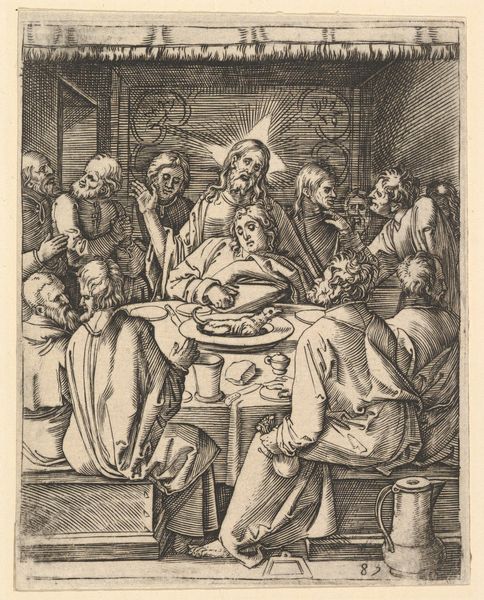
En muslingeskal fra en niche (angiveligt fra Diocletians termer) en base (angiveligt fra eller ved San Marco) og to stykker af ornamentale friser 16th century
0:00
0:00
drawing, print, intaglio, engraving
#
drawing
#
narrative-art
# print
#
pen illustration
#
pen sketch
#
intaglio
#
figuration
#
history-painting
#
northern-renaissance
#
engraving
Dimensions: 377 mm (height) x 245 mm (width) (bladmaal)
Editor: Here we have a 16th-century engraving, "The Last Supper," whose creator remains anonymous, part of the collection at the SMK. What strikes me immediately is its intense detail and the sheer number of figures squeezed into a single scene, the composition feels crowded but purposeful. How do you interpret this work, considering its historical context? Curator: That feeling of purposeful crowding is key. In the context of the Northern Renaissance, the detailed realism isn't just about accurate depiction. It's a means of conveying moral weight. The figures aren't just people; they're representations of faith, doubt, and betrayal, operating within a specific social understanding of religious narrative. Notice how the setting—the architecture, the table—becomes a stage for enacting religious doctrine. Where does the setting position the viewer within this moral play? Editor: I suppose it places us both as observers, witnessing a really intimate event as outsiders. I wonder about the symbolism? I see a lot of references, objects that surely meant a lot more back then. Curator: Precisely! That symbolic weight is crucial. The single plate on the floor. The arrangement of figures, a sort of staged moment where light seems to suggest importance. It invites the viewer to interpret how that setting participates in shaping faith during a time of religious and social upheaval. What's the relationship between the image and the viewer, within this landscape? Editor: It's amazing how a simple engraving can reflect the tensions and dynamics of its time, the personal struggles set against the background of bigger socio-religious factors. Curator: Indeed. Images weren't just pretty decorations. They played an active role in shaping cultural thought and defining social identities. What was simply consumed has much larger historical, cultural, and institutional meaning. Editor: I see it now, the power of images as active participants in shaping belief. Curator: And hopefully, now, you also see its reverberations across centuries of social discourse.
Comments
No comments
Be the first to comment and join the conversation on the ultimate creative platform.
